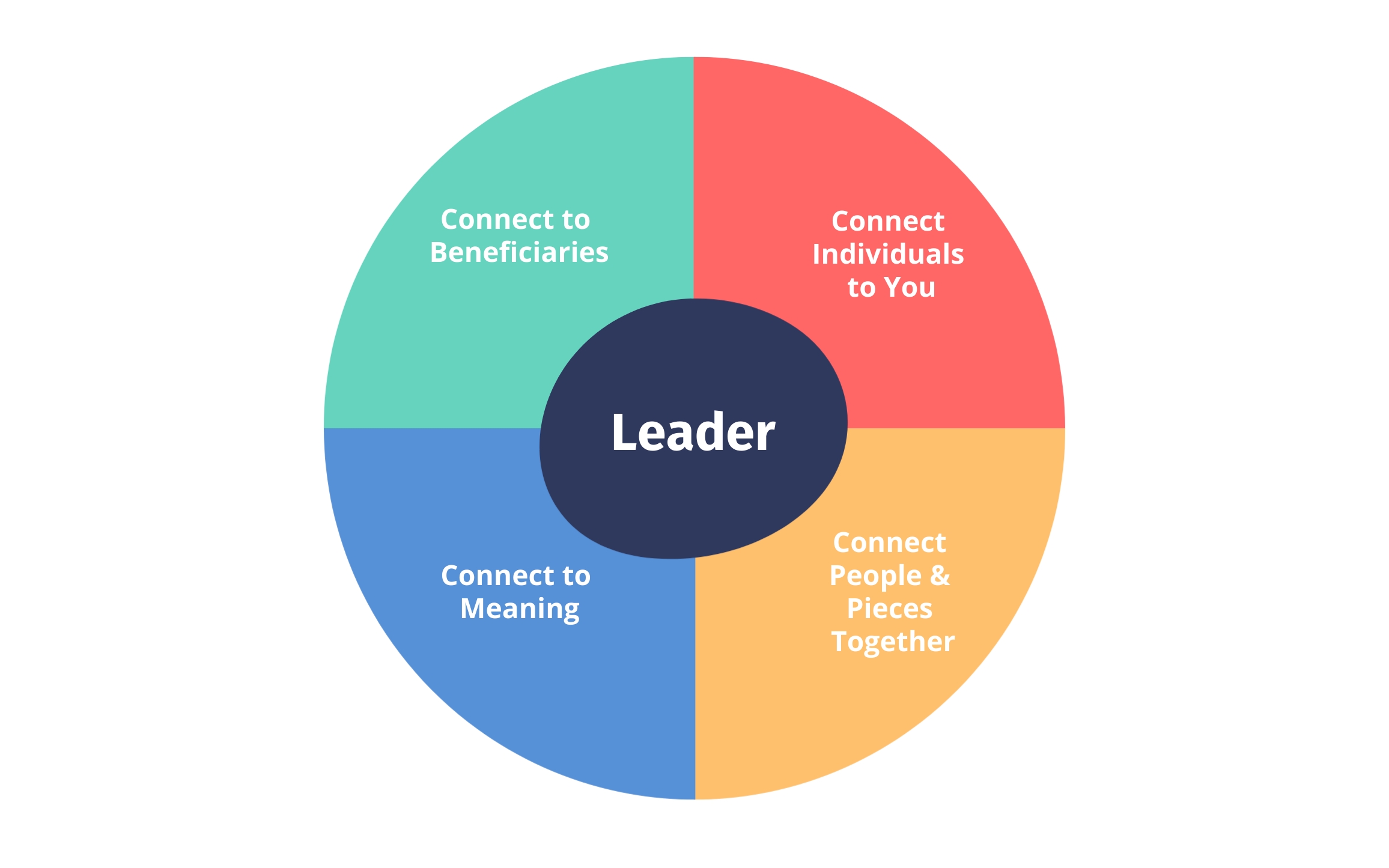
As an executive coach, I have the privilege of partnering with top leaders - from those sponsored by their organisations to individuals who commission me privately.
Workplaces tend to have lots of interdependencies, complexity and unknowns that change daily. High achievement leaders provide their team with contextual understanding of their work environment which is critical for the speed and efficiency of their team.
When there is a lack of common or shared understanding within an organisation, it creates a whole raft of issues. These include:
Creating connection and a sense of belonging in a workplace is a multi-faceted process that is a bit like putting together a jigsaw puzzle.
In the work that I do within organisations, I have found that there are four important connection areas required by employees from their team leader:

As the team leader, if you wish to get you team into the achievement zone, these are the four areas where you need to focus your connection efforts.
Your direct reports are eager for your approval. As you hold the power to their job security, they are always watching you to make sure that you are pleased with their work and that their job is safe. They need to be reassured that you are there for them and that you have got their back.
When improving any leadership capability, it is important to work on improving your self-awareness or Emotional Intelligence (EQ). People with empathy are good at recognising the feelings of others, even when those feelings may not be obvious. As a result, empathetic people are usually excellent at managing relationships.
This requires showing interest in understanding your direct reports, but also your peers. Taking the time to build relationships is key, as well as assuming positive intent and listening to others. It also requires modelling the right behaviours to encourage your team members to do the same actions. Being vulnerable, asking deeper questions of others and modifying your reactions are critical techniques to employ.
One of the main problems in big organisations is that people do not understand the overarching vision and how everything connects together. Visions tend to be too abstract and not concrete enough for employees the further down you go in a hierarchy.
Your role is to help “connect the dots for people.” It’s not just about connecting people to people, but also explaining how all of the different parts fit together within the broader landscape. From projects, products, priorities, platforms right through to all of the people that make everything happen. Aiming towards fostering shared consciousness - a quality of high performing teams.
This involves communicating a clear purpose, connecting team members to one another and actively introducing employees to other people across the organisation (to bust silos).
As a leader, it’s not enough to inspire ourselves and our team to complete work. The more we do work that appears to have no real purpose, the less motivated and engaged we become.
To encourage our team into the high achievement zone, we need to help our team connect to the impact and the meaning behind the work that they do.
Studies have found that the key factor in improved worker motivation is a direct correlation to those who benefit from one’s work, including customers and clients. The key to making boring work more interesting is to tie it to a more inherently fulfilling act of service.
There are three types of beneficiaries that you need to help employees connect to external customers, internal customers and yourself. Sometimes the work our direct reports do is well, quite, dreary. Helping them understand how that work improves your life, and the organisation, is key to improving their job fulfilment.
Helping your direct reports connect how others benefit from their work provides context and understanding to the external impact of the work that they do.
But it’s also important to connect employees to how their individual talents, values, interactions and effort makes a difference. In other words, the internal aspect of their work or personal contribution and how it works towards building a better tomorrow.
Research has found that when people experience meaningful work they report better wellbeing, health, teamwork and engagement. They are also more resilient - bouncing back faster from setbacks. Furthermore, they are more likely to have a growth mindset where they see mistakes as learning opportunities rather than failure.
In a big organisation, it is easy for employees to lose their sense of identity and value because they are measured against the inner workings of the organisation and not their own potential.
Without a belief in personal impact, people tend to not appreciate the meaning behind their job and don’t go the extra mile. And while no leader or organisation can control the perception of meaningless work, leaders can actively cause meaninglessness. A study from MIT found that few employees made any mention of effective leadership during meaningful moments at work. Yet, poor leadership was associated with undermining meaningfulness.
A key leadership skill is to help people reflect on how their work creates an impact to the broader organisational goals. It requires providing autonomy, specific feedback and recognising and rewarding employees for their work.
Leaders must provide employees with a holistic understanding of the interactions between all the moving parts across the organisation.
A leader’s responsibility is about doing everything they can to foster an environment where people can thrive. It is not about the big things such as launching a new product strategy, but the little every day things. That may be as simple as helping a direct report understand the customer better or develop stronger relationships with their coworkers.
Ultimately, you cultivate trust by ensuring people feel valued for who they are, understand how their work positively impacts those around them and through providing the right people and resources to see it through. Employees must feel connected to their coworkers and their team. They must feel that their work is meaningful and benefits others.
Then, all you need to do is step back, get out of the way and watch the magic unfold.

As an executive coach, I have the privilege of partnering with top leaders - from those sponsored by their organisations to individuals who commission me privately.